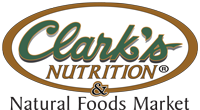Search Healthnotes
Maple Water: An Untapped Hydration Source
Maple water—the raw, unprocessed sap from maple trees—may be maple farmers’ best-kept, thirst-quenching secret. Traditionally, maple sap, which is 98% water, is boiled down to make everyone’s favorite pancake topping, maple syrup. But the rising popularity of other plant waters, like coconut water, has given maple water a new purpose. Here are some reasons to tap into this lightly-sweet, all-natural drink trend:
- Clean label. Maple water typically has one ingredient, maple water, with no additives or preservatives. Not initially shelf stable, manufacturer’s use different processing techniques to extend the water’s shelf-life without preservatives, such as freezing it until it’s ready to bottle or flash-pasteurizing it before bottling.
- Low-cal. Compared to coconut water, maple water is low in calories. For example, an 8-ounce serving of coconut water has an average of 45 calories and 11 grams of sugar, while the same serving of maple water has an average of 15 calories and 3 grams of sugar.
- Nutrient-rich. Maple water manufacturers tout its nutrient content, which includes calcium, manganese, antioxidants like polyphenols, electrolytes, and prebiotics.
- Farmer-friendly. Not only does maple water come from a sustainable source—maple trees—it also gives maple farmers an additional revenue source. Many farmers can only process so much maple syrup each year, so in the past they’d turn off the flow when that quota was filled. Now, they can keep the taps flowing throughout the season and use the overflow sap for maple water production.
Source: NPR
Copyright © 2026 TraceGains, Inc. All rights reserved.










